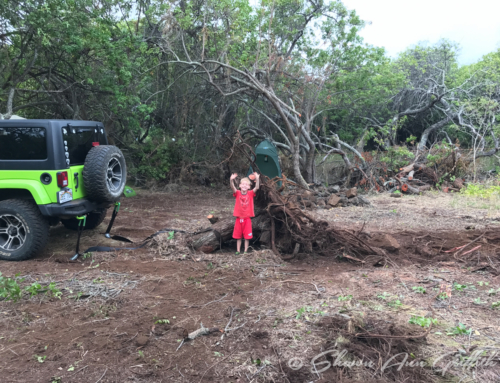Whether you are a beginner at gardening, or you’ve been doing it for years, you could be making one or all of these gardening blunders. Some of them are so easy to make and many times you don’t even realize it until it is too late. If you catch these gardening blunders early enough, you can fix them. However, if you don’t find out about them soon enough, then you will lose some plants.

4 Most Common Gardening Blunders
Don’t worry if you are making these gardening blunders. It doesn’t mean you are a bad gardener or that you shouldn’t have a garden. They happen to just about everyone. I’m sure even the pros have made these gardening blunders at one time or another. I know that I’ve made each of these gardening blunders at least once. Gardening is a continual learning process; you can never know everything about gardening.
Not Improving the Soil
Having bad soil is probably the worst thing when it comes to a garden. You MUST have excellent soil in your garden. It doesn’t matter if your garden is plants and flowers or if it is of fresh fruits, vegetables, and herbs. You MUST have excellent soil.
Yes, you can start with bad soil and improve it. One of the best ways to improve the soil is to add compost to it. You can do this in one of two respects. The first way would consist of you turning over the current soil to get it nice and loose. Then you will want to add about two inches or so of compost to the soil and then mix the compost with the current soil. The other way would be turning over the existing soil and then lay about two inches of compost to the top. Allow the compost and worms do the rest. With both methods, you’ll want to add additional compost throughout the year to continually improve the soil.
Planting too Closely
When purchasing plants from your local garden center, you will notice that many of the plants, if not all of them, will have a small tag included with care instructions. These instructions usually tell you how to plant each plant, including how far apart you should space them. When planting if you are not following the instructions and planting too closely together than you are going to run into problems in the future with the plants. There are recommended depths and spacing for each plant, and there is a good reason. If the plants are planted too closely together, then they will not have enough room to grow and the hardier of the plants will kill off the other plants to take over space. Each plant needs enough room to not only grow but for their roots to spread.
Under or Over Watering
Plants need water; however, they do not like it when they do not get enough water, or they get too much water. Overwatering is probably more widespread than under watering. However, both are not good for plants. The goal to perfect watering is to keep the soil damp at all times, but never soggy. You want all around the root ball and just below it to be damp, which encourages the roots to grow towards the water without rotting them.
If you happen to add too much water, then the next time you water don’t add as much water. If you aren’t adding enough water, your plants will tell you because they will droop. Just add a little extra water in between watering times and then the next scheduled watering be sure to add a little extra so that the water lasts until the next watering, or water a bit more frequently.
Planting in the Wrong Places
Yes, you can plant your flowers and other plants in the wrong place, especially if you are planting many different types of plants in the same area. It is very easy to do, especially if you are not familiar with the plant.
Tall vs. Short
Plant the taller plants in the back and shorter plants in the front. Otherwise, the taller plants will block the sun for the shorter plants and they will die from lack of sunlight. The same would go for planting a vegetable garden. You wouldn’t want the corn or other taller growing plants to block out the sun for the carrots or other vegetables that grow in or close to the ground.
Sun vs. Shade
Another way of planting in the wrong place would be planting something that requires lots of sun in a shady spot or a shady plant in a place that gets the sun all day. Some plants just don’t like to get as much sun as others, and other plants require a lot of the sun to do well. Again, be sure to read the little instruction card that comes with the plant so that you are planting as directed.
Early Bloom vs. Late Bloom
The last way of planting in the wrong places would be planting the plants that flower first behind the flowers that bloom last. You want the flowers to be seen at all times. For example, don’t plant the Mums in the front row of your flower garden because they typically do not bloom until the fall. This means that their foliage will block out any of the other lower flowering plants that usually bloom in the spring and summer months. However, you don’t necessarily want them planted behind Daylilies because you’ll not see the foliage until after the Daylilies have completely bloomed and died off for the season. Plant the Mums in front of the Daylilies to fill in any gaps and to also make the flower garden more full.
It is easy to make any of these gardening blunders, even if you are a seasoned gardener. The best way to avoid each of these gardening blunders is to follow the instructions for each plant. You can also purchase gardening books to help you know where, when, and how to plant each individual plant.
How many of these garden blunders are you guilty of? Do you know of any other gardening blunders that we should add to the list? Let us know in the comments.
You may also like these other Gardening posts if you are new to gardening.






You are absolutely right about not planting in the right places! I didn’t know this until one of my friends pointed out that the reason why one of my plants was not blooming was because I placed it in a shady area!
It’s an easy mistake to do and if you catch it early enough you can move the plant to the right location and have it blooming.
Hello Shawn, it happens mostly while planting new plants. By using these wonderful tips we can do better gardening. Thanks for sharing this necessary information.